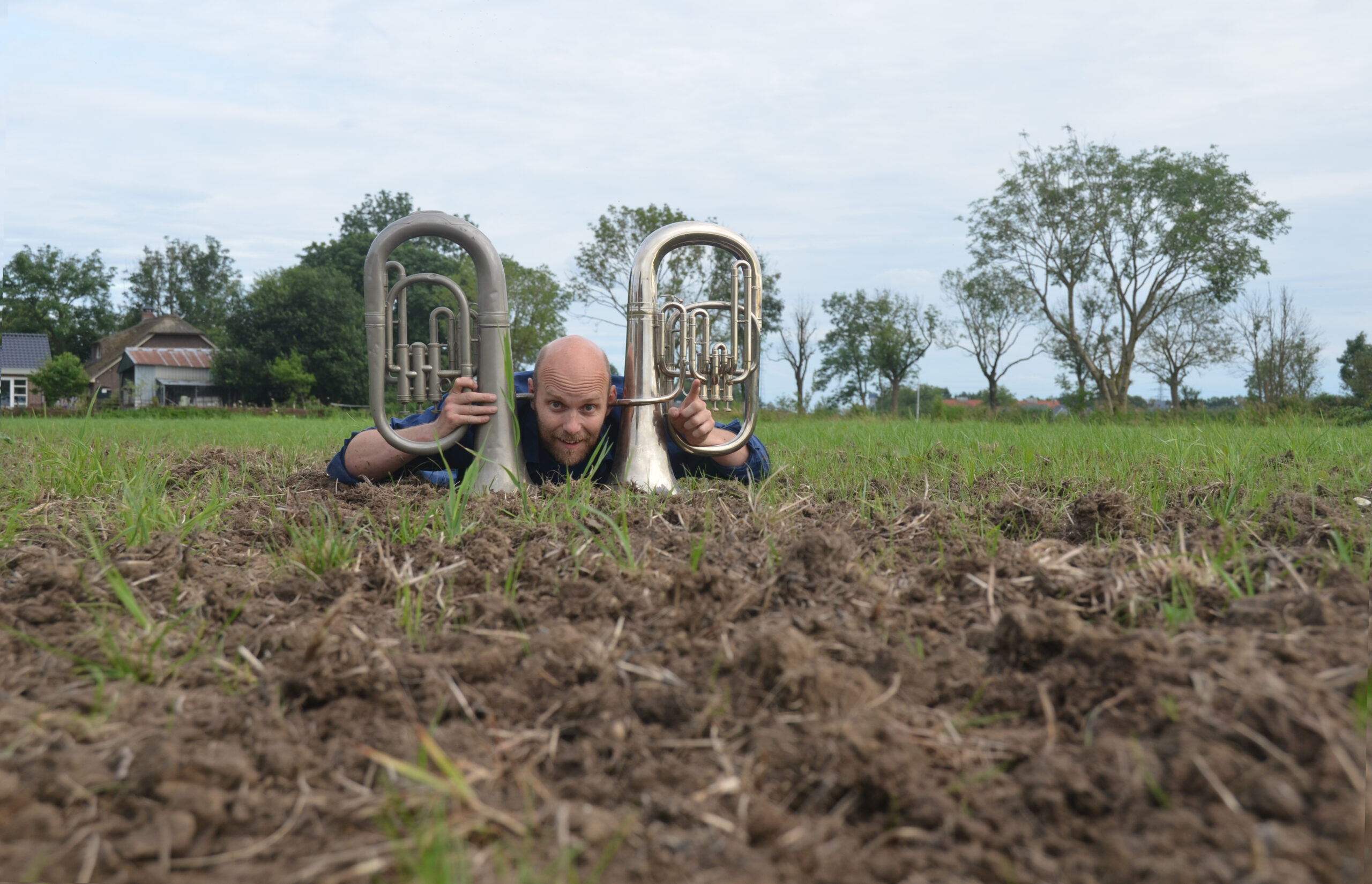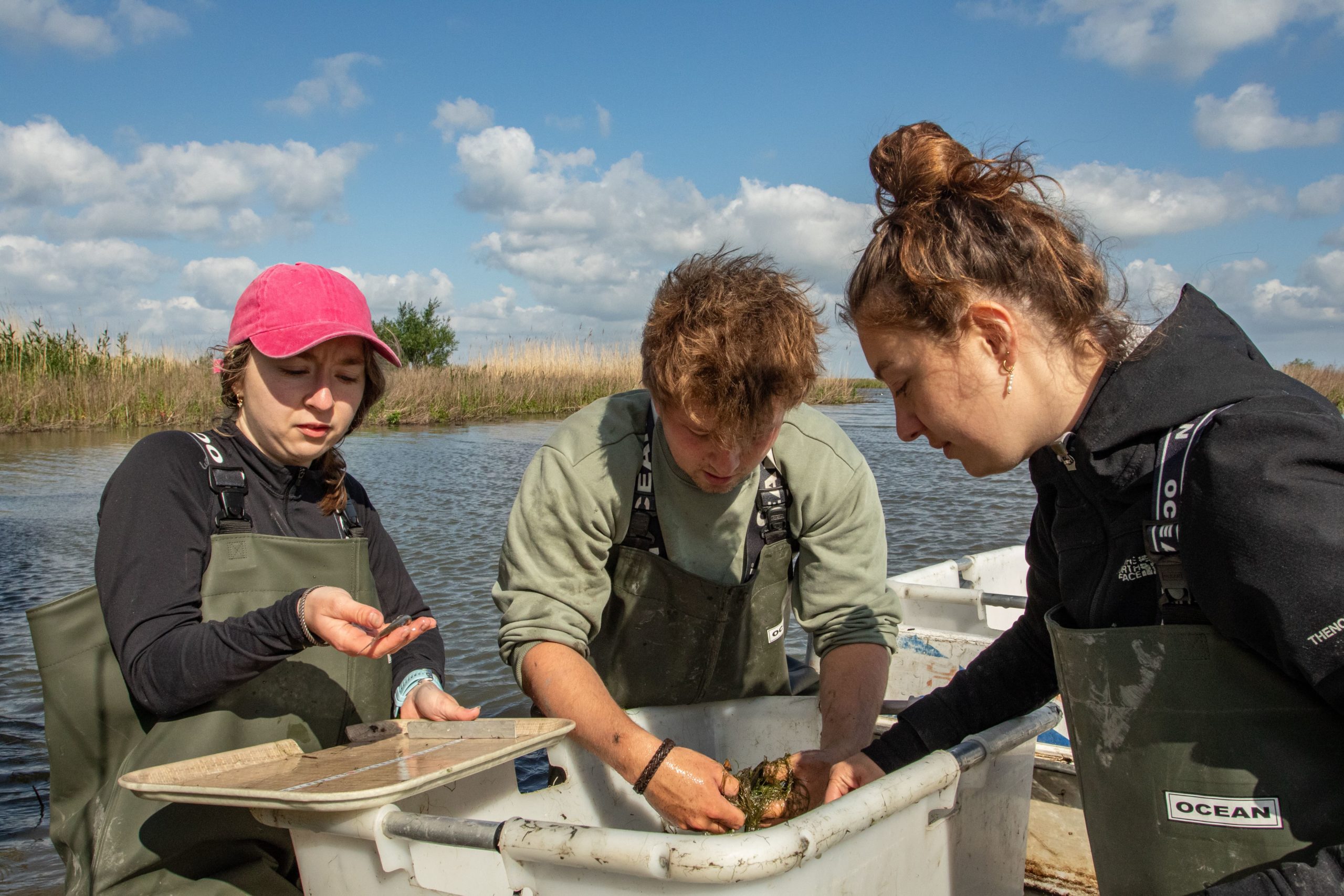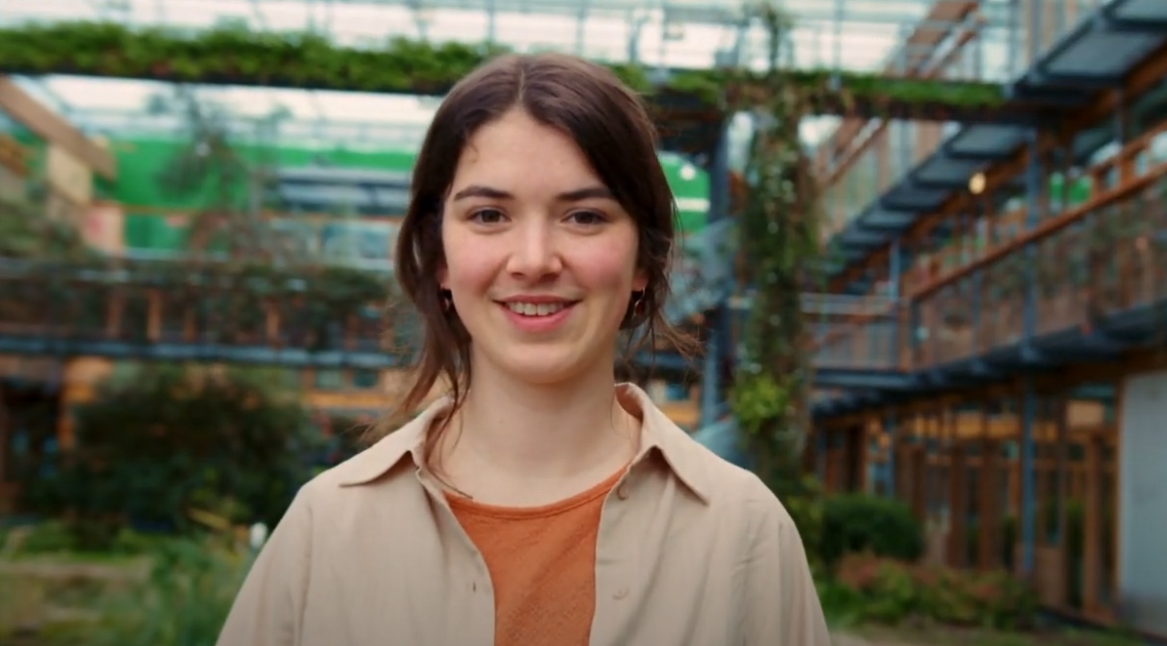Sanne Raghoebar, assistant professor of Consumption & Healthy Lifestyles, wants to make science more visual. One of her illustrations appeared recently in Appetite, a peer-reviewed scientific journal.
When Sanne Raghoebar got her PhD three years ago in the chair group she now works in, she designed her thesis cover herself. ‘A colleague of mine like it so much that she encouraged me to set up an Instagram account for my illustrations and to share the fact that I do this more often on LinkedIn. That was the start of my own company Dr. ArtSci,’ explains Raghoebar from her chair group’s common room. ‘Since then I have increasingly drawn on my passion for illustration in my work as a scientist. I want to make science accessible through illustrations.’
Click on image to enlarge. Text continues below the image.
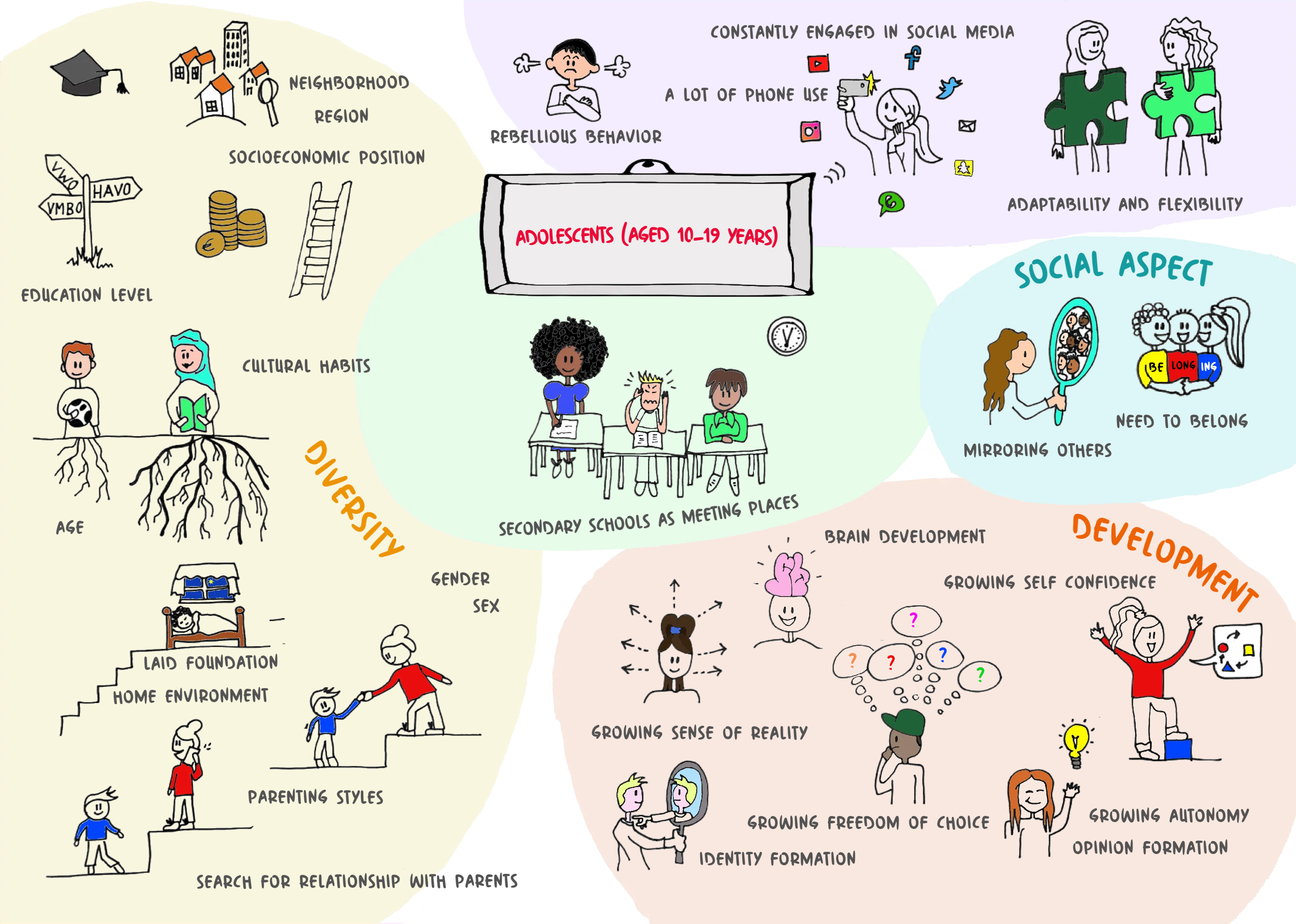
In the illustrated paper published by the peer-reviewed journal, she and her colleagues documented what it takes to get adolescents at secondary schools to make healthier and more sustainable dietary choices. ‘We organized focus groups for that, with experts in the fields of health, sustainability, education and nutrition. The experts told us that adolescents don’t form a homogeneous target group. We want to communicate that knowledge to the readers. With this illustration (see illustration, ed.) it is clear at a glance – much faster than in text – that the target group is highly diverse.’
Creative
‘Science is a creative endeavour and we scientists can harness our creativity to make our research more accessible. Images can help to strengthen research methods, make research projects visible and identifiable, and communicate research results in an appealing and comprehensible way.’
‘We know that people understand and remember information better if it is offered both textually and visually. That makes absorbing the information more enjoyable as well. And it is generally easier for people from the lower socio-economic echelons to understand information supported by visuals.’
‘Ultimately, as a researcher you want to make an impact, scientifically and socially. By combining tools like questionnaires with illustrations, you can cater for differences between people and you make your research more accessible. Moreover, scientific articles can be hard to follow for practitioners in the field. With creativity – illustrations, film clips, acting, presentations or photography, whatever suits you best – we can try to reach more people and make scientific findings easier to apply.’
Influencers
‘I think we can learn a lot from online influencers. Not everything they say is correct, but the general public enjoys their posts. The way they share their information works: they have a broad following and can therefore have a big influence. Scientists could do that too, but need to tackle it more creatively at times.’

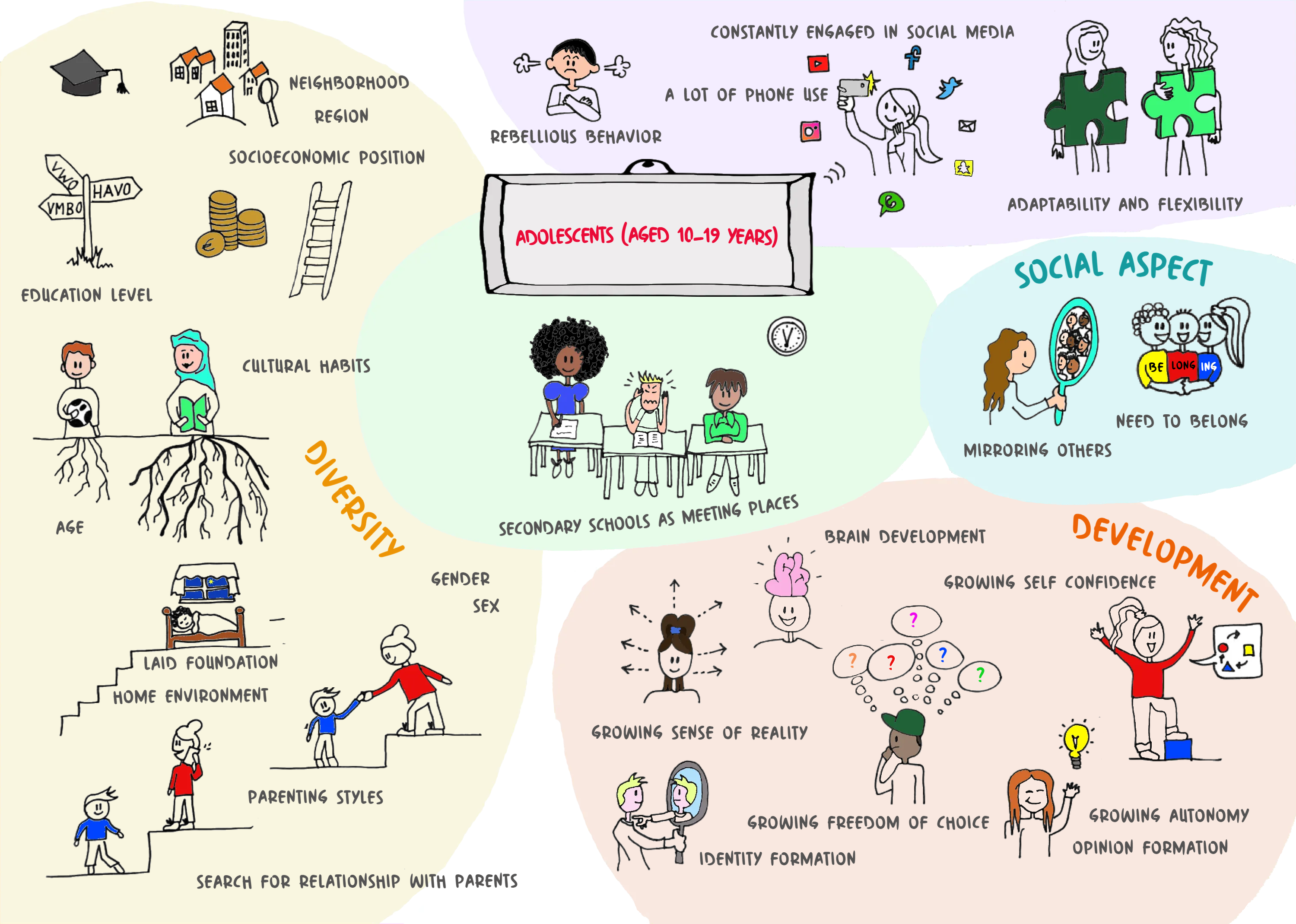 Cutout of a visualization of the characteristics of adolescents. An illustration by Sanne Raghoebar (© Dr. ArtSci 2023) that appeared in Appetite.
Cutout of a visualization of the characteristics of adolescents. An illustration by Sanne Raghoebar (© Dr. ArtSci 2023) that appeared in Appetite. 